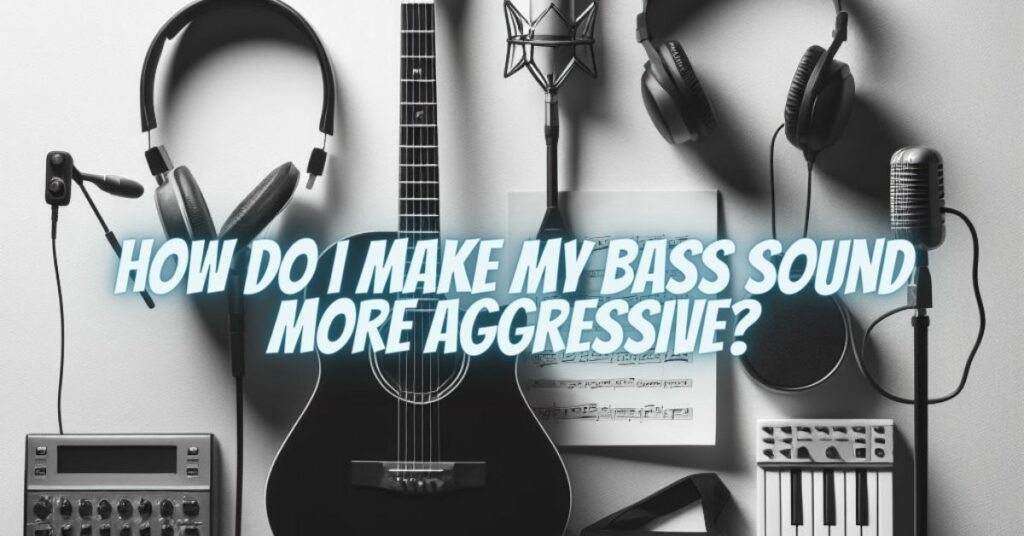An aggressive bass sound can add power and punch to your music, and make it sound more exciting and engaging. There are a few different ways to achieve this sound, depending on the genre of music you’re playing and the overall sound you’re trying to achieve.
1. Use a compressor
A compressor is a great tool for making your bass sound more aggressive. It works by reducing the dynamic range of the signal, which means that the quieter parts of the sound are brought up and the louder parts are brought down. This creates a more consistent and powerful sound.
When using a compressor on bass, it’s important to set the attack and release times correctly. Too fast of an attack will make the bass sound too punchy, and too slow of a release will make it sound muddy. Aim for an attack time that’s fast enough to catch the initial transients, and a release time that’s slow enough to let the sustained notes ring out.
2. Use EQ
EQ can also be used to make your bass sound more aggressive. Boosting the low frequencies will add more weight to the sound, and boosting the upper frequencies will make it more present in the mix.
However, it’s important to be careful not to overdo it with the EQ. Too much low boost can make your bass sound muddy, and too much high boost can make it sound harsh. Start with small boosts and see how it sounds.
3. Use distortion
Distortion can add bite and edge to your bass sound, making it sound more aggressive. However, it’s important to use distortion sparingly, as too much can make your bass sound muddy and cluttered.
Start with a low gain setting and see how it sounds. You can also try using a distortion pedal that is specifically designed for bass guitar.
4. Use saturation
Saturation can add warmth and body to your bass sound, making it sound richer and more complex. It can also add a bit of grit and aggression to the sound.
There are a few different ways to add saturation to your bass sound. You can use a dedicated saturation pedal or plugin, or you can use a distortion pedal or amp at a low gain setting.
5. Use picking technique
Your picking technique can also affect the sound of your bass. A harder picking technique will produce a brighter and more aggressive sound. Conversely, a softer picking technique will produce a warmer and more mellow sound.
Experiment with different picking techniques to find the one that gives you the sound you’re looking for.
6. Use the right strings
The type of strings you use can also affect the sound of your bass. Roundwound strings tend to have a brighter and more aggressive sound than flatwound strings.
If you’re looking for an aggressive bass sound, try using roundwound strings. You may also want to try using a heavier gauge of strings, as this will produce a fuller and more powerful sound.
7. Use the right amp
The type of amp you use can also affect the sound of your bass. A solid-state amp will typically produce a cleaner and more precise sound, while a tube amp will produce a warmer and more rounded sound.
If you’re looking for an aggressive bass sound, you may want to consider using a tube amp. You may also want to try using an amp with a built-in distortion circuit.
There are many different ways to make your bass sound more aggressive. Experiment with different techniques and equipment to find the sound that you like best.
Here are some additional tips:
- Try playing closer to the bridge of the bass. This will produce a brighter and more aggressive sound.
- Try using a pick instead of your fingers. This will also produce a brighter and more aggressive sound.
- Experiment with different EQ settings. Boosting the high frequencies can make your bass sound more present and aggressive.
- Try using a compressor to boost the overall level of your bass sound.
- Try using a distortion pedal or amp to add grit and edge to your bass sound.
With a little experimentation, you’ll be able to find the perfect aggressive bass sound for your music.


